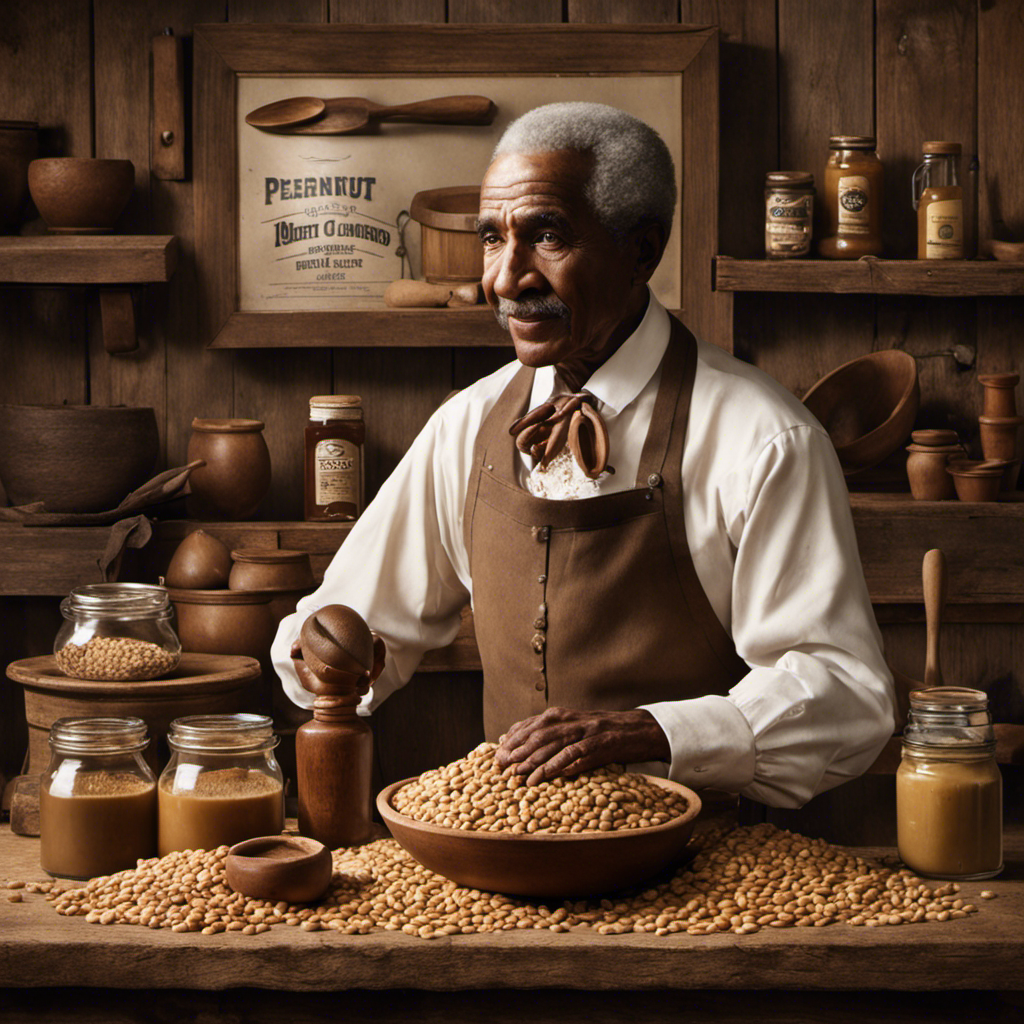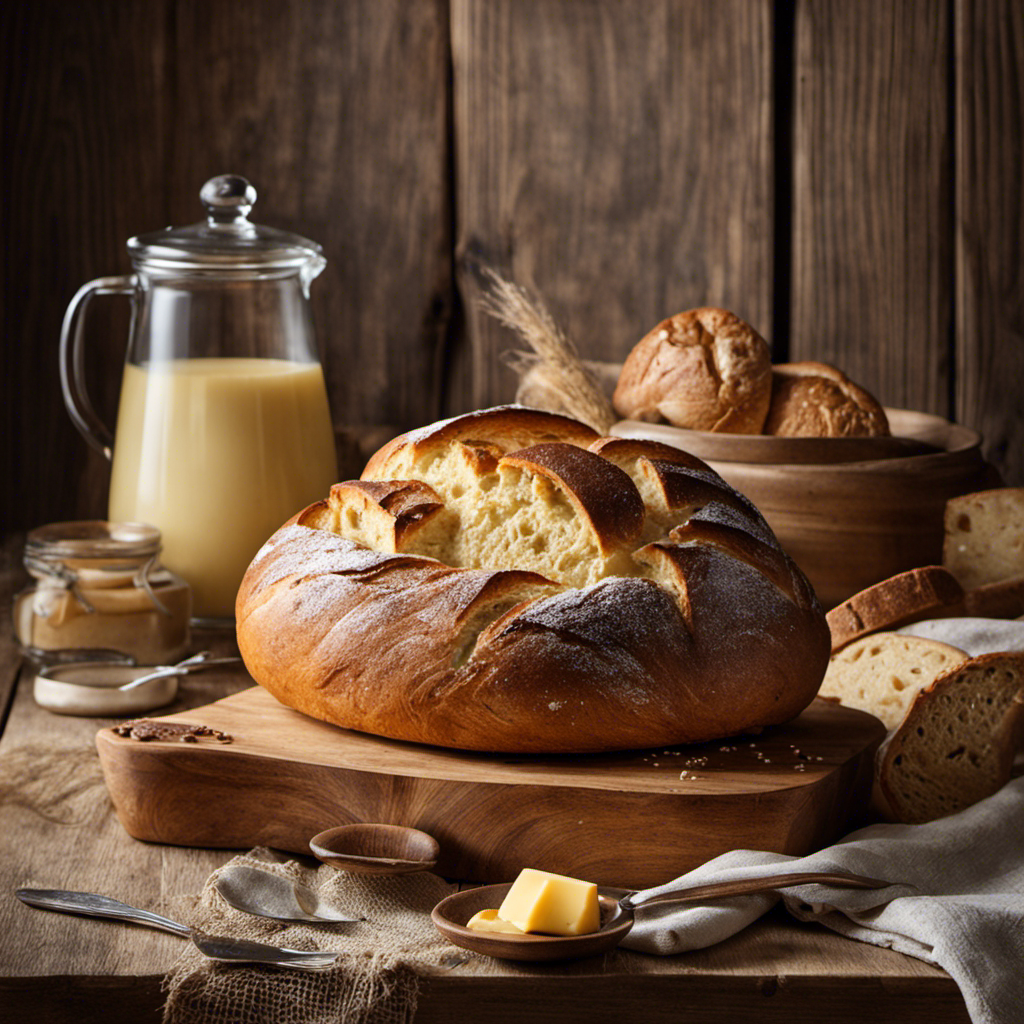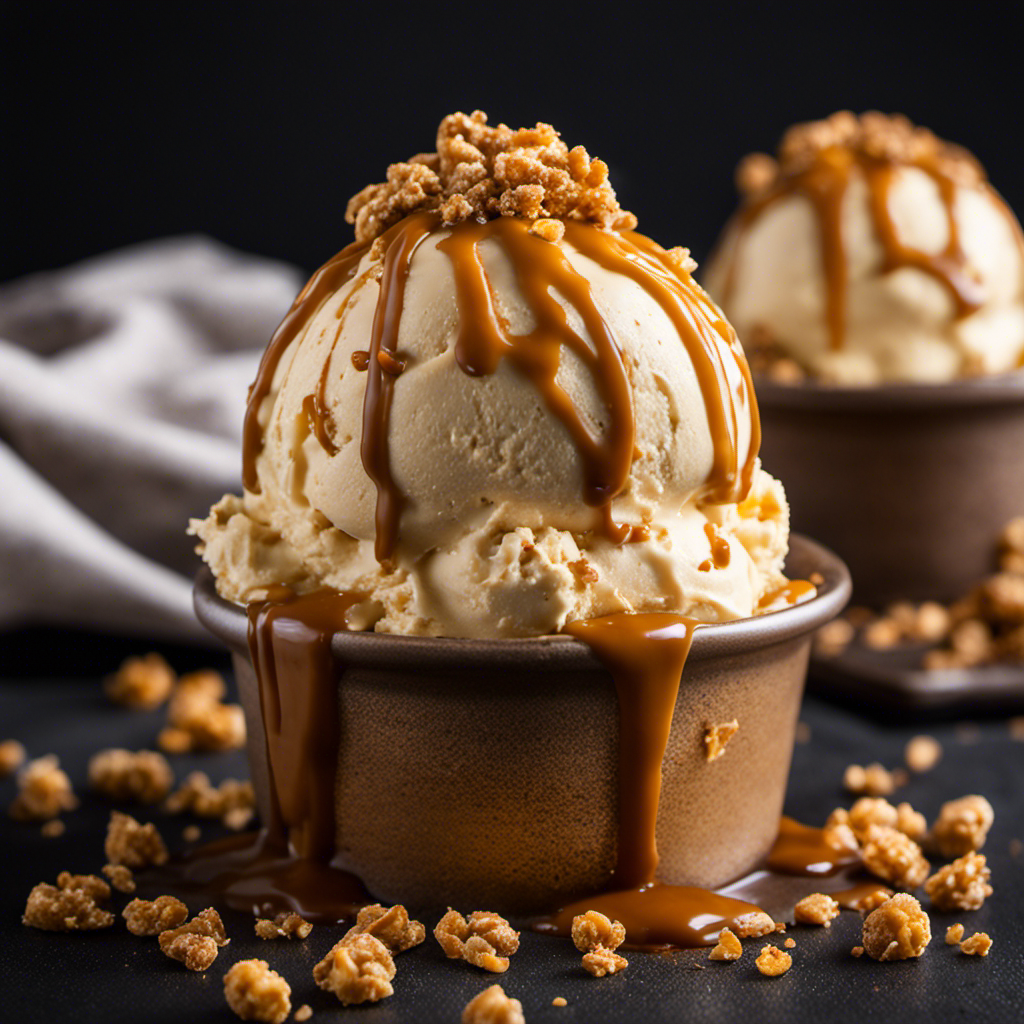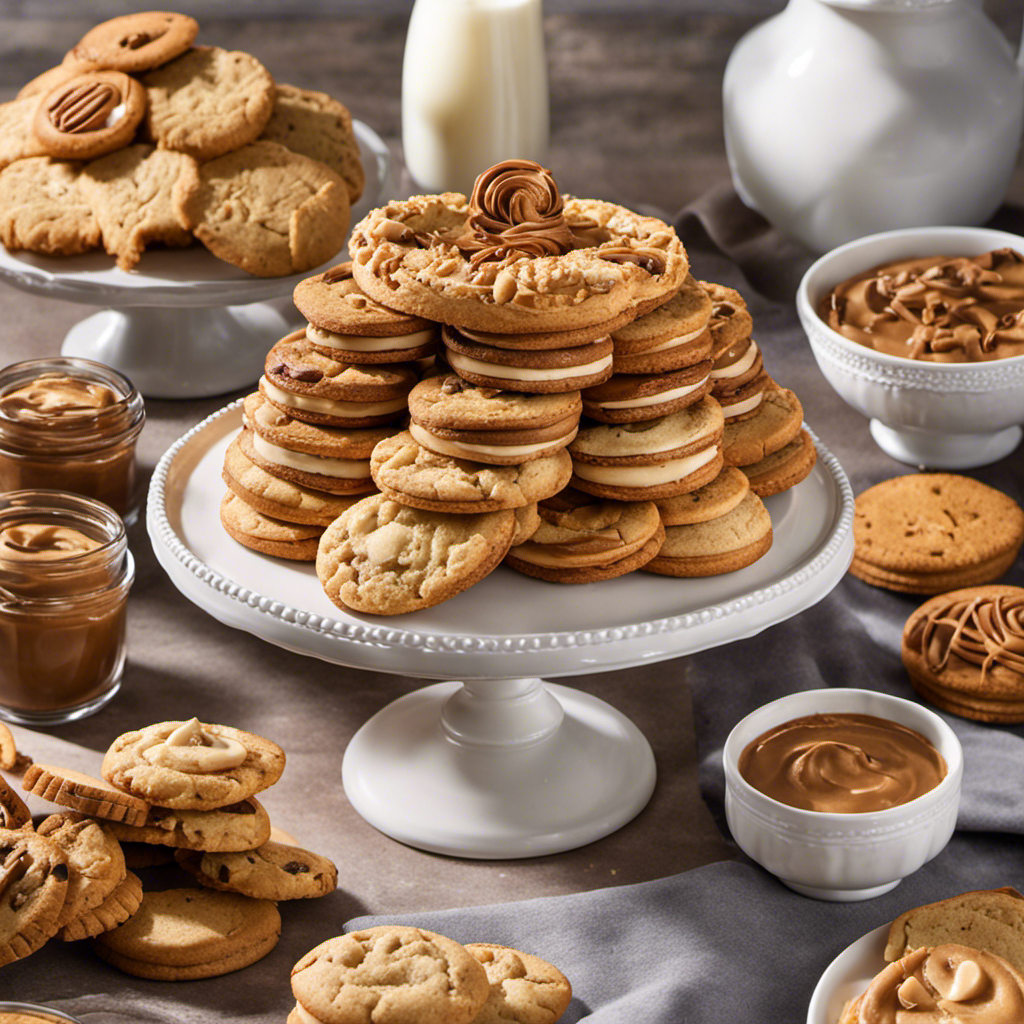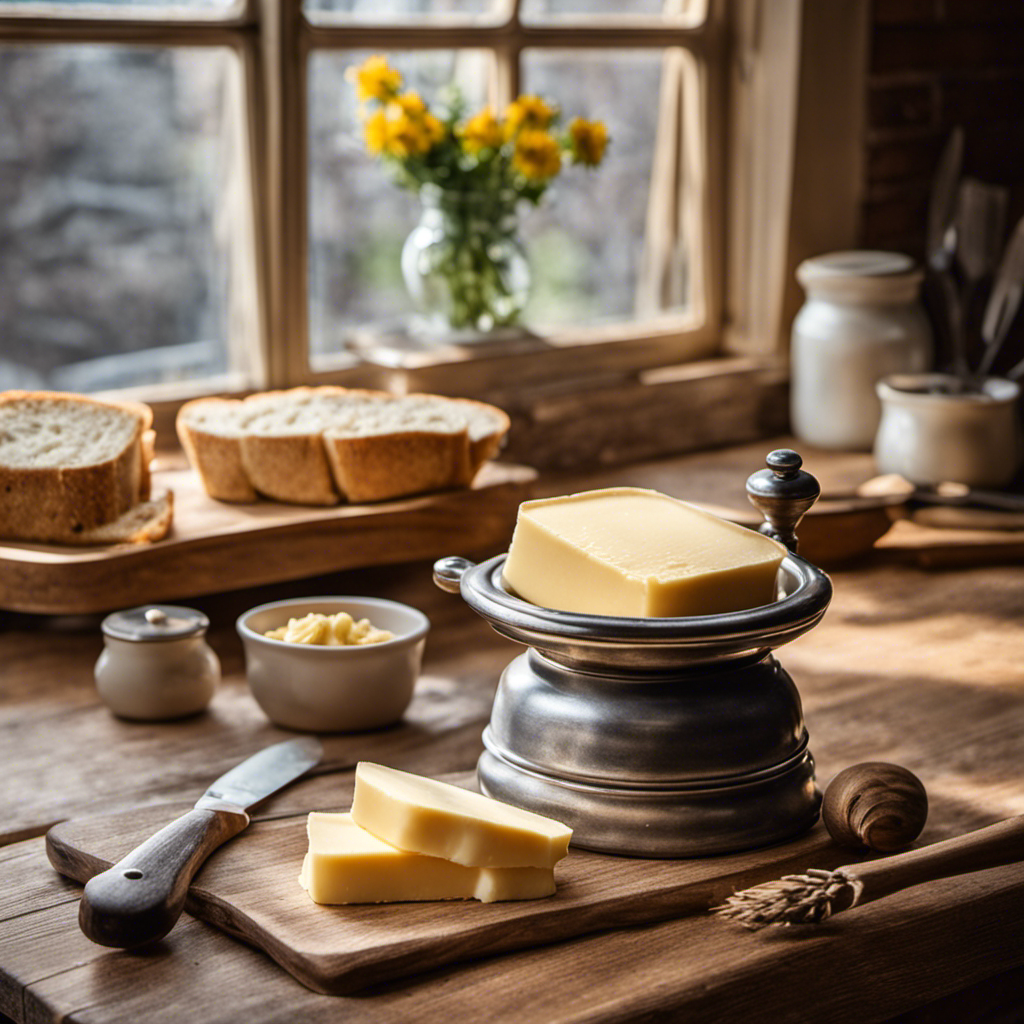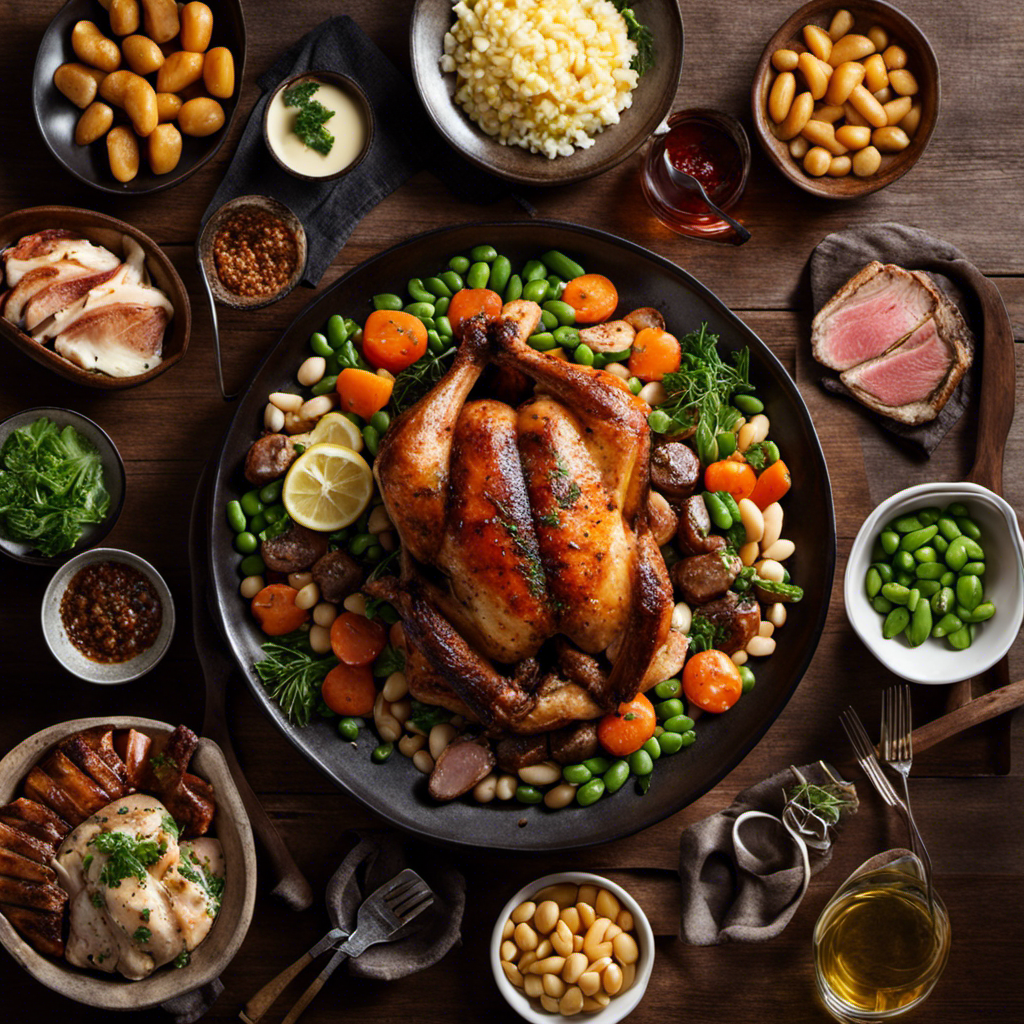Did you know that 90% of American households love peanut butter? This interesting statistic highlights the widespread fondness for this popular spread.
In this article, I will explore the origins of peanut butter, focusing on the question of who actually invented it. Through a thorough and analytical examination, we will uncover the contributions of individuals like George Washington Carver, the commercialization and mass production of peanut butter, as well as the innovations and variations that have made it a staple in our diets today.
Key Takeaways
- Peanut butter can be traced back to the Aztecs and Incas, who were the first to grind roasted peanuts into a paste-like consistency.
- George Washington Carver developed peanut butter recipes through his experiments and research, revolutionizing the way people enjoy peanuts and providing a solution for surplus peanut crops.
- Peanut butter gained popularity due to its versatility as a spread, opening up possibilities for creating delicious and nutritious meals.
- Commercialization of peanut butter faced challenges but overcame them through marketing strategies, innovative packaging, and branding techniques, leading to widespread availability and affordability for consumers.
Early Origins of Peanut Butter
You might be surprised to learn that the early origins of peanut butter can be traced back to the Aztecs and Incas.
Peanut butter, as we know it today, has a long and fascinating invention history.
The Aztecs and Incas were the first to grind roasted peanuts into a paste-like consistency, which they used for various purposes.
However, it wasn’t until the late 19th century that peanut butter as we know it was invented.
In 1884, Marcellus Gilmore Edson, a Canadian chemist, patented a process for making peanut paste that was more similar to the peanut butter we enjoy today.
Peanut butter has since become a popular spread, known for its versatility and nutritional benefits.
It is a good source of protein, healthy fats, and essential vitamins and minerals.
Additionally, peanut butter can be used in a variety of dishes, from sandwiches to baked goods, making it a staple in many households.
George Washington Carver’s Contribution
George Washington Carver greatly impacted the culinary world with his groundbreaking contribution to the creation of a popular spread made from peanuts. Through his experiments and research, Carver developed numerous peanut butter recipes that revolutionized the way we enjoy this versatile and delicious food.
Carver’s dedication to finding practical uses for peanuts led him to discover the process of grinding roasted peanuts into a creamy paste, which eventually became known as peanut butter. His experiments not only created a new and tasty treat, but also provided a solution for farmers dealing with surplus peanut crops.
Carver’s peanut butter recipes showcased the incredible potential of this humble legume, forever changing the culinary landscape and cementing his status as a pioneer in the field of agricultural innovation.
The Spread of Peanut Butter’s Popularity
Carver’s peanut butter recipes quickly gained popularity, sparking a culinary trend that revolutionized the way people enjoyed peanuts. The versatility of peanut butter as a spread opened up a world of possibilities for creating delicious and nutritious meals. From sandwiches to desserts, peanut butter became a staple ingredient in many households. Its creamy texture and rich flavor made it a favorite among both children and adults.
Not only did peanut butter taste great, but it also offered numerous health benefits. Packed with protein, fiber, and healthy fats, peanut butter provided a satisfying and nutritious snack option. It was also a good source of vitamins and minerals, such as vitamin E, magnesium, and potassium. These nutritional properties made peanut butter a popular choice for athletes and individuals looking to maintain a balanced diet.
Overall, Carver’s peanut butter recipes not only introduced a delicious spread, but they also helped people incorporate the health benefits of peanuts into their daily lives. The popularity of peanut butter continues to grow, as more and more people discover its versatility and nutritional value.
Commercialization and Mass Production
The commercialization and mass production of peanut butter led to its widespread availability and affordability for consumers. However, this process did not come without its challenges.
One of the main commercialization challenges was convincing consumers to try peanut butter as a new food product. To overcome this, marketing strategies were implemented to showcase the versatility and health benefits of peanut butter. Advertisements were created to target different demographics and emphasize its nutritional value, such as being a good source of protein and healthy fats.
Additionally, companies explored innovative packaging and branding techniques to make their peanut butter stand out in a crowded market. Through these marketing strategies, peanut butter was successfully introduced to the masses, becoming a beloved staple in households worldwide.
Innovations and Variations in Peanut Butter
You can explore a wide range of innovative flavors and textures when it comes to peanut butter, such as honey-roasted, crunchy, or even spicy varieties. In addition to these variations, there are also nut-free alternatives available for those with allergies or dietary restrictions. Gourmet peanut butter has also gained popularity in recent years, offering unique blends and high-quality ingredients.
Below is a table showcasing some of the different types of peanut butter and their characteristics:
| Type of Peanut Butter | Flavor | Texture |
|---|---|---|
| Honey-Roasted | Sweet | Crunchy |
| Spicy | Fiery | Smooth |
| Nut-Free | Mild | Creamy |
| Gourmet | Rich | Chunky |
These options provide consumers with the opportunity to experiment and find their preferred taste and texture. Whether you prefer a classic creamy peanut butter or enjoy the added complexity of gourmet blends, there is a peanut butter out there to satisfy every palate.
Frequently Asked Questions
What Are Some Common Misconceptions About the Early Origins of Peanut Butter?
Misconceptions about the early origins of peanut butter include the belief that it was invented by one person. In reality, peanut butter has a long history, dating back to the Aztecs and Incas who ground peanuts into a paste-like substance.
Did George Washington Carver Invent Peanut Butter?
George Washington Carver is often credited with inventing peanut butter, but this is a common misconception. While Carver did promote the use of peanuts, he did not actually invent peanut butter.
How Did Peanut Butter Become Popular Outside of the United States?
Peanut butter became popular outside the US due to its versatile use in various recipes and its recognized health benefits. It gained traction as people discovered its delicious taste and nutritional value.
What Were Some Challenges Faced During the Commercialization and Mass Production of Peanut Butter?
Challenges faced during the commercialization and mass production of peanut butter included finding effective marketing strategies and overcoming competition. It required careful planning and innovation to establish peanut butter as a popular and widely consumed product.
Are There Any Unique or Unusual Variations of Peanut Butter Available in the Market Today?
There are many unique variations of peanut butter available in the market today. Some of the most unusual flavors include honey sriracha, chocolate banana, and cookie dough. Peanut butter desserts like pies and cookies are also popular.
Conclusion
So there you have it, my friends. Peanut butter, that creamy and delicious spread that we all love, has quite the fascinating history.
From its early origins to the genius of George Washington Carver, peanut butter has truly become a staple in our lives.
But let’s not forget the commercialization and mass production that brought this heavenly concoction to every household. And let’s not overlook the countless innovations and variations that continue to amaze our taste buds.
So next time you indulge in a spoonful of peanut butter, remember the journey it took to reach your pantry. It’s a story worth savoring.
